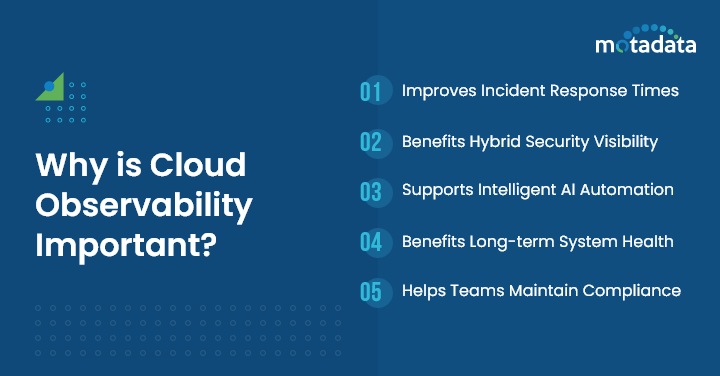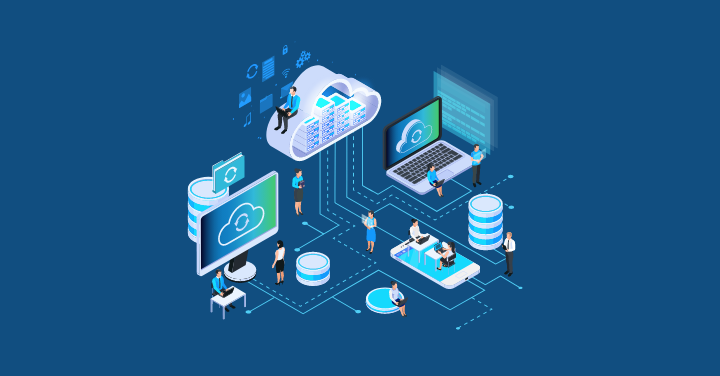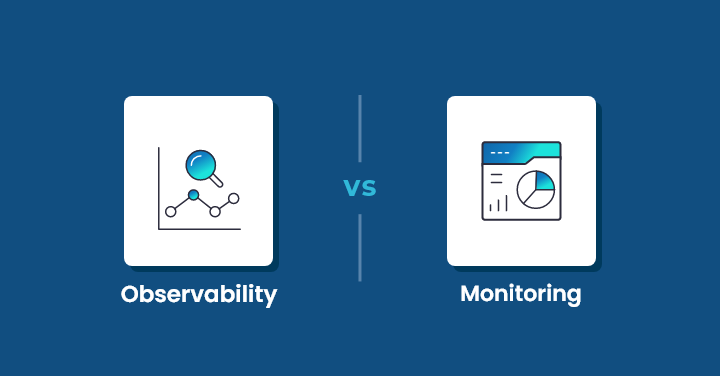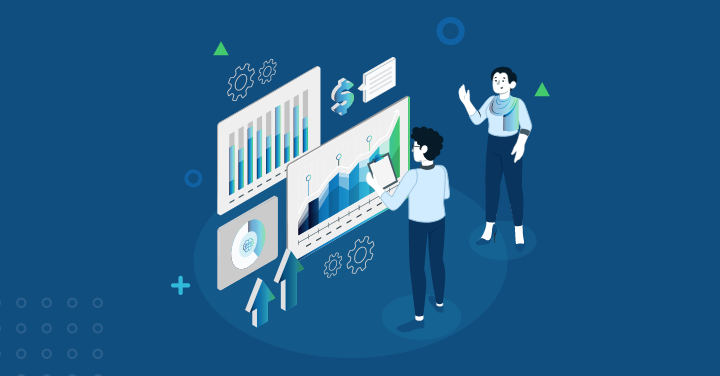The utilization of cloud-based technologies developed to optimize and streamline business operations is far from a novel idea.
In fact, research suggests at least 90% of modern organizations currently use cloud platforms and related technologies to oversee essential processes.
However, while such tools can bring benefits, enabling professionals to collect, analyze, and visualize relationships between vast amounts of data across multiple important systems, not all stakeholders fully understand cloud security.
With cyber-attacks increasing by almost 40% in recent times, and experts observing a 13%% spike in ransomware attacks over the last five years, cloud security efforts are quickly becoming a top priority for business leaders across most major sectors.
So much so that as many as 83% of organizations believe this to be among their top business priorities.
So, how do organizations of various sizes intend to effectively strengthen existing cloud-based systems?
One promising solution lies in the pursuit of cloud observability, an organizational structure that enables businesses to better analyze and address potential issues across interconnected cloud technologies.
To help teams better understand this pursuit, this post will explore the importance of cloud observability in ensuring security for modern businesses.
What is cloud observability?
To understand cloud observability, it can help to first examine the concept of observability as a whole.
With regards to commercial operations, this term simply describes the ability to analyze the internal workings of a system by examining the data associated with its outputs.
When applied to the operation of cloud services and systems, observability defines any and all efforts to measure the performance of a software system’s internal states using data collected from its outputs.
In other words, this pursuit provides stakeholders with a more holistic understanding of the health, configuration and general performance of cloud-based systems.
Continuous collection of data from various associated performance monitoring tools and solutions achieves this.
Teams funnel information into a centralized observability platform for analysis and later visualize it.
This concept is particularly beneficial for security personnel, as they can view data associated with multiple tools in unison, highlighting actionable insights that can help stakeholders improve the identification of potential hazards.
Cloud Observability vs Cloud Monitoring
Given the broad similarities between the concepts of cloud observability and monitoring, it’s understandable that many professionals struggle to view each as a distinct pursuit.
However, while both concepts do share dependencies, their differences are important to understand.
Cloud monitoring concerns the live information teams receive from analytics applications and cloud-based tools.
This includes alerts and notifications warning staff of real time issues so that teams can enact responses and reduce threats.
For example, a manufacturing company may have alerts programmed to warn teams of equipment failures.
The decision to monitor these systems helps staff to enact quick responses to ultimately reduce machine downtime and improve the user experience.
In this sense, teams receive live information after identifying an issue.
While observability takes this data into account, it also concerns the logs, metrics, traces, and a deluge of telemetry data associated with all connected systems.
The final intention being to provide wide-ranging insights regarding network health used to inform the creation of proactive security measures.
In short, traditional monitoring is an action taken to increase the network observability of the wider system.
Why is Cloud Observability Important?
The main objective of increasing cloud observability is to enhance the overall performance of an organization’s overarching IT infrastructure.
The more distinct cloud-based tools, software applications and technologies a company operates, the more important the pursuit of an observability solution becomes for IT organizations.
Essentially, increasing cloud observability provides staff with the insights required to not only identify risks, but also develop effective and unique preventive measures.
To help professionals understand exactly how to accomplish this, below, we outline a range of benefits associated with efforts to increase cloud observability and improve the digital experience in business environments.
1. Improves Incident Response Times
By increasing observability, organizations better position themselves to collect high quality data pertaining to multiple physical and cybersecurity solutions.
Technologies that may have been previously siloed can then be observed in relation to wider cloud-based networks and microservices, helping teams to uncover potential threats far more accurately and efficiently.
With a comprehensive view of all active systems, including data pertaining to both historic and real time security events, stakeholders increase their chances of identifying abnormal or suspicious actions that may indicate the beginnings of a security breach.
This heightened level of observability can be leveraged to improve incident responses and mitigate threats.
2. Benefits Hybrid Security Visibility
When increasing the observability of a multi-faceted or hybrid cloud-based system, teams gain the ability to not only view the individual operation of specific tools, but also their operational relationships with the wider system.
This increased visibility can be leveraged to aid teams in better identifying, understanding and addressing potential security gaps, ultimately getting to the root cause of any issues across all linked tools.
Pursuing cloud observability helps to highlight how changes made to one system may affect the efficacy of tangentially related solutions.
This holistic view of all connected cloud-based systems improves an organization’s ability to identify security gaps, as well as work to create new workflows and protective solutions designed to continuously improve security on diverse platforms.
3. Supports Intelligent AI Automation
The more observable a system is, the better visibility teams will have with regard to the data collection points best suited for automation.
Increasing observability enables staff to develop unique integrations with machine learning and AI-informed technologies.
Helping leaders to implement automated processes to improve the efficiency of essential operations while enhancing the customer experience.
Such a pursuit enables teams to detect patterns in observable external data sources, ultimately helping to improve a number of key processes like threat detection, system health monitoring, devops and system maintenance operations.
When developed as a part of a wider observability initiative, artificial intelligence integrations can help businesses to automate a significant number of essential operations to some meaningful extent.
4. Benefits Long-term System Health
Improving visibility makes it far easier for teams to identify specific areas in which bottlenecks and performance issues are most common.
By highlighting these areas through load testing and opentelemetry actions, teams can improve their ability to perform effective troubleshooting processes, benefitting long-term system health.
The utilization of observability tools provides businesses with valuable insights regarding the common operation of key systems.
This information can be used to identify and address potential issues far more efficiently, as well as act to improve resource optimization efforts and proactively reduce the impact of unknown unknowns.
5. Helps Teams Maintain Compliance
Finally, efforts to create observable systems can help organizations to maintain compliance with a number of industry-specific rules and regulations.
By ensuring systems are monitored with the aid of high-quality real time data, inconsistencies can be addressed and eliminated.
Observable systems are also much easier to audit and review on a regular basis, with teams able to access relevant configurational information, application performance metrics and data logs with relative ease.
IT and security staff can check that the development, deployment and implementation of new tools will not cause issues regarding compliance, boosting the efficiency of wider operations.
Best Practices For Building Cloud Observability
To effectively create observable systems, IT and security professionals must not only consider the development of specific tools and technologies, but also a combination of organizational practices and strategies intended to make the most appropriate use of collected data.
Observable systems rely on all stakeholders understanding how to analyze and act upon information pertaining to various aspects of the wider cloud-based network.
To help teams successfully implement such strategies, below are some best practices worth considering.
1. Analyze Existing Instrumentation and Services
To ensure the success of cloud observability initiatives, teams must first identify and record the state of all existing cloud-based tools and applications.
The ultimate goal of increasing observability is to configure systems in such a way that data from multiple sources can be analyzed at once.
So, it’s vital that the underlying cloud infrastructure (such as AWS or Microsoft Azure) is reliably documented.
With a detailed framework of existing cloud applications on record, businesses can begin analyzing the relationships between different tools and instruments to understand where data collection points will be best placed.
After completing this task, businesses can safely implement new technologies in the pursuit of both business growth and digital transformation initiatives.
2. Define Troubleshooting and Security Objectives
Once a framework has been developed, security and IT teams can work together to detail the ultimate objectives of an organization’s cloud observability strategy.
Professionals must consider processes such as real time threat detection, system performance optimization and incident response capabilities, basing data collection on efforts to improve these processes.
3. Implement Devops and Analytics Applications
At this stage, organizations should be ready to start implementing new applications designed to collect high quality observability data across all aspects of the wider cloud-based system.
Teams must leverage software agents, libraries and custom code to reliably collect relevant metrics, logs and view data tracing information associated with specific cloud applications to increase observability and instrumentation.
4. Outline Key Performance Indicators (KPIs)
Cloud observability improvements will only be truly effective if organizations have outlined clear KPIs used to define the efficacy of new developments.
KPIs must align with the goals set during the planning of cloud observability strategies, including threshold values linked to threat detection, system health, system performance and resource utilization processes.
5. Develop a Centralized Dashboard
Developing an easily accessible management platform is essential for professionals to analyze collected data and compare this information to relevant KPI thresholds.
Stakeholders can make appropriate use of collected information by utilizing customizable dashboards that offer real-time insights and automated alerts, enhancing operations.
6. Commit to Continuous Training
An effective cloud observability strategy will help teams make continuous improvements to all active cloud applications.
To support this process, staff across the entire business must know how to interpret and act upon collected data.
Continuous training should be provided to ensure all workers understand the importance of observability in ensuring site-wide security.
Summary
As both business operations and commercial cloud environments continue to become increasingly complex, leaders are beginning to see the value in efforts to increase cloud observability.
Providing security and IT teams with high-quality data pertaining to all aspects of a business’ cloud infrastructure (including IT operations) measurably improves threat responses.
The more observable a cloud system is, the easier it is for stakeholders to not only address threats in real time, but also develop proactive measures to prevent issues from forming.
This underlines the importance of cloud security in ensuring security for modern businesses.
FAQs:
Cloud observability refers to the capability to monitor, analyze, and understand the performance and behavior of cloud systems through comprehensive data collection and analysis.
It enhances security by providing real-time visibility into system activities, enabling the detection of anomalies, unauthorized access, and potential threats across cloud environments.
Observability is crucial in cloud environments due to their complexity and dynamic nature, enabling organizations to maintain control, improve security, and ensure compliance.
Automation helps streamline data collection, alerting, and incident response processes, allowing organizations to quickly identify and mitigate security threats.
It supports compliance by providing comprehensive logs and data required for audits, ensuring that organizations can demonstrate adherence to regulatory standards and policies.









